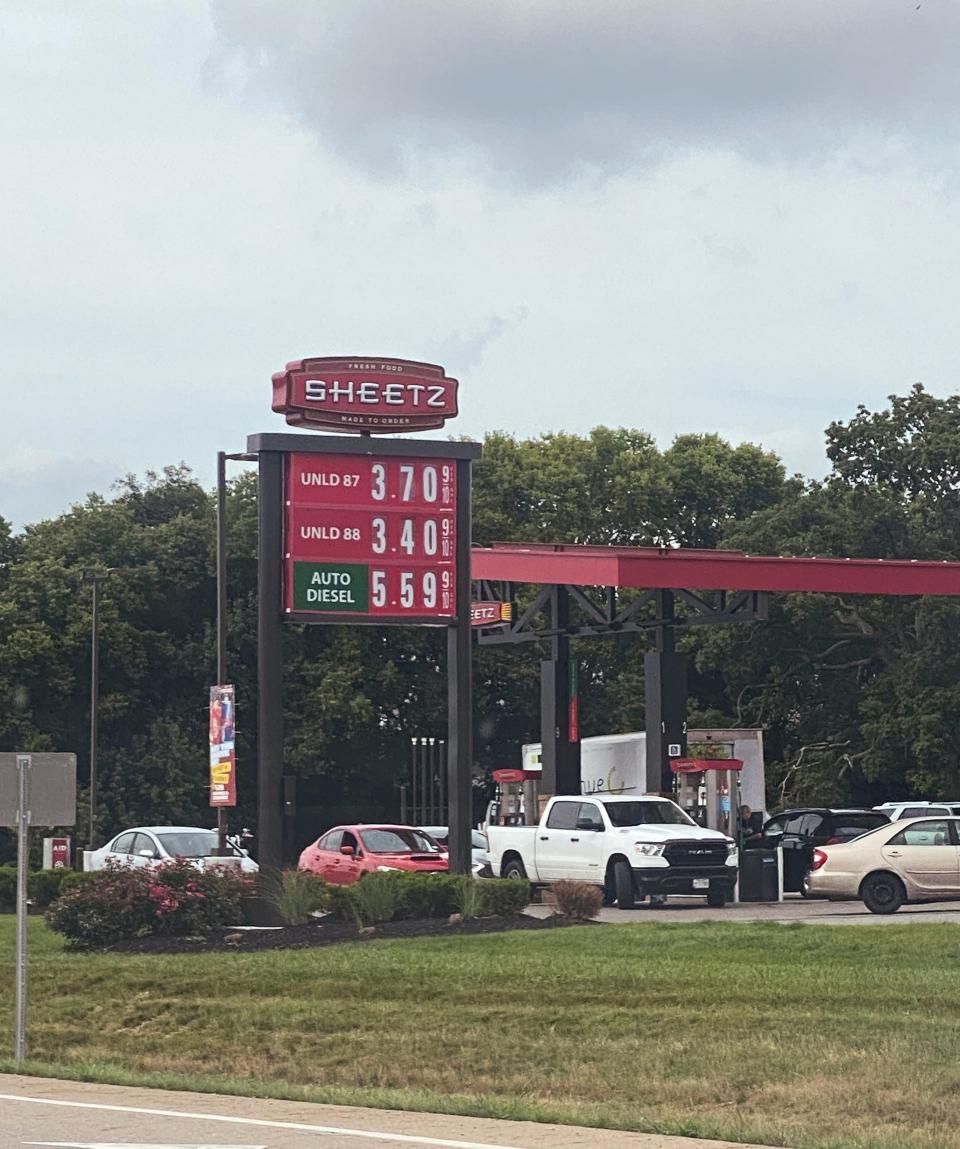Unleaded 88 fuel is spreading in Ohio, but is it good for your car and the climate?
In March 2021, no gas stations in the Columbus area offered unleaded 88, a higher-ethanol and often cheaper alternative to regular gasoline.
Today, 20 stations in the area offer the fuel and more are in the works.
The surge stems almost entirely from the arrival of Sheetz, which opened its first central Ohio gas station in Delaware in April 2021. The chain, which declined to comment for this article, represents 19 of at least 20 Columbus-area stations offering unleaded 88, also called E15.
According to experts, unleaded 88 gets slightly lower gas mileage than regular unleaded and gives off fewer carbon emissions, but the differences are minor. Experts say it is worth using if the price is low enough.
The fuel contains up to 15% ethanol and gas stations promote it as an affordable option in a time of soaring gas prices.
The number of stations offering the fuel remains low, but has risen sharply in recent years.
Ohio has at least 88 gas stations that sell unleaded 88, up from 10 or 15 in 2016, according to the Renewable Fuels Association. (A spokesperson cautioned that the association's list is not comprehensive.) Nationwide, around 2,400 stations sell E15, about 1.5% of the total. The fuel is, on average, 10% cheaper than regular unleaded.
Why unleaded 88?
Virtually all unleaded gasoline sold in the United States is at least 10% ethanol, thanks to renewable fuel standards approved in 2005.
Agriculture officials say a move to unleaded 88 benefits consumers, easing prices at the pump and reducing pollution.
"It has lower greenhouse gas emissions than regular gas, it adds to the rural economy, and it costs consumers less in the gas tank," said Kelly Harsh, a Delaware County farmer and board member of the Ohio Corn and Wheat Growers Association.
Experts, however, say the agriculture industry has a self-serving reason to promote E15: Farmers struggling with thin profit margins want to sell more corn.
“It keeps the industry in business,” said Glenn Lipscomb, a professor of chemical engineering at the University of Toledo who has studied ethanol blends.
Unleaded 88: What's the difference with regular gasoline?
Misinformation and ethanol hype abounds on the internet, making a sober assessment of unleaded 88 a challenge.
“People will make a lot of claims that they can't stand behind,” said Ahmet Selamet, a senior fellow at Ohio State University’s Center for Automotive Research.
Still, the drawbacks are small, he said.
The gas mileage from unleaded 88 depends on the vehicle, but in general, “the energy content for ethanol is less than gas,” said Denton Cinquegrana, chief oil analyst for the Oil Price Information Service.
Gasoline produces roughly 43 megajoules of electricity per kilogram, while ethanol produces only 30, meaning pure ethanol achieves lower gas mileage than pure gasoline. However, with only a 5% difference in ethanol content, the disparity between unleaded 88 and regular unleaded is negligible.
"I suspect most people will have a hard time seeing the actual reduction," Lipscomb said. "It could be masked by other factors like weather, how you drive, tire pressure, but it's going to be really, really close in terms of fuel economy."
In some cases, the price difference — which depends on the gas station — makes unleaded 88 worth it, experts say.
Daniel Ciolkosz, an associate professor of agricultural and biological engineering at Penn State University, says drivers should try it for themselves. “Run a tank under normal conditions with regular unleaded and run a tank with unleaded 88 and see what's the difference,” he said.
Ciolkosz believes unleaded 88 is worth buying if it is at least 5% cheaper than regular unleaded.
E15 fuel gives off fewer carbon emissions than regular unleaded, but once again, the disparity is small.
Georgios Karavalakis, who leads an experimental research program on combustion engines at the University of California Riverside, studied E15 at the request of the state of California, which approved the blend over the summer.
“It's a beneficial fuel and our study showed that,” he said. “Most of the tailpipe emissions from a fleet of 20 vehicles (we tested) decreased.”
A definitive statement on E15’s environmental benefits requires a “life-cycle assessment” measuring carbon emissions at every stage of the production process, Karavalakis said. But experts generally agree ethanol production gives off less carbon dioxide than gasoline production because it’s plant-based.
E15 has another, more subtle, benefit, Selamet noted. It comes from corn grown in the United States, meaning the price at the pump is less susceptible to the whims of foreign leaders.
Most corn grown in Ohio for ethanol is processed here, Harsh said.
"An important market for corn farmers are the seven plants in Ohio," Harsh said.
Unleaded 88: Is it safe to use in your vehicle?
Contrary to some social media reports, unleaded 88 won’t destroy your car.
“It's a tested and proven fuel,” said Robert White, vice president of industry relations for the Renewable Fuels Association.

The EPA has approved E15 for use in passenger vehicles built after 2001, although some high-performance vehicles recommend only using mid-range and premium gas.
The fuel can damage an engine if it sits in the tank for too long, which is why the government agency does not recommend it for vehicles used seasonally, such as boats and lawn mowers.
If you drive regularly, your car should be fine, experts say.
pcooley@dispatch.com
@PatrickACooley
This article originally appeared on The Columbus Dispatch: Unleaded 88 fuel: What drivers need to know

